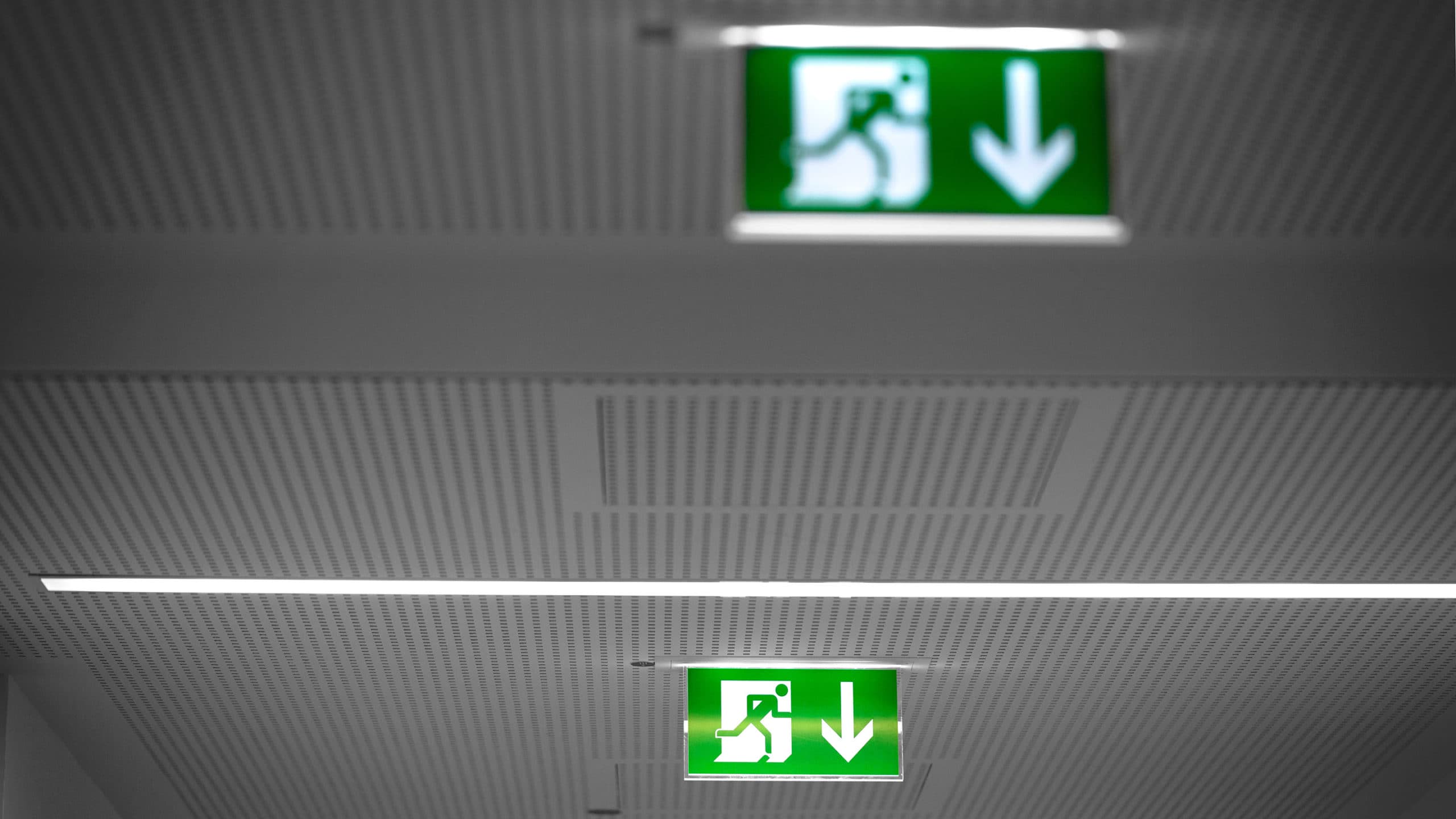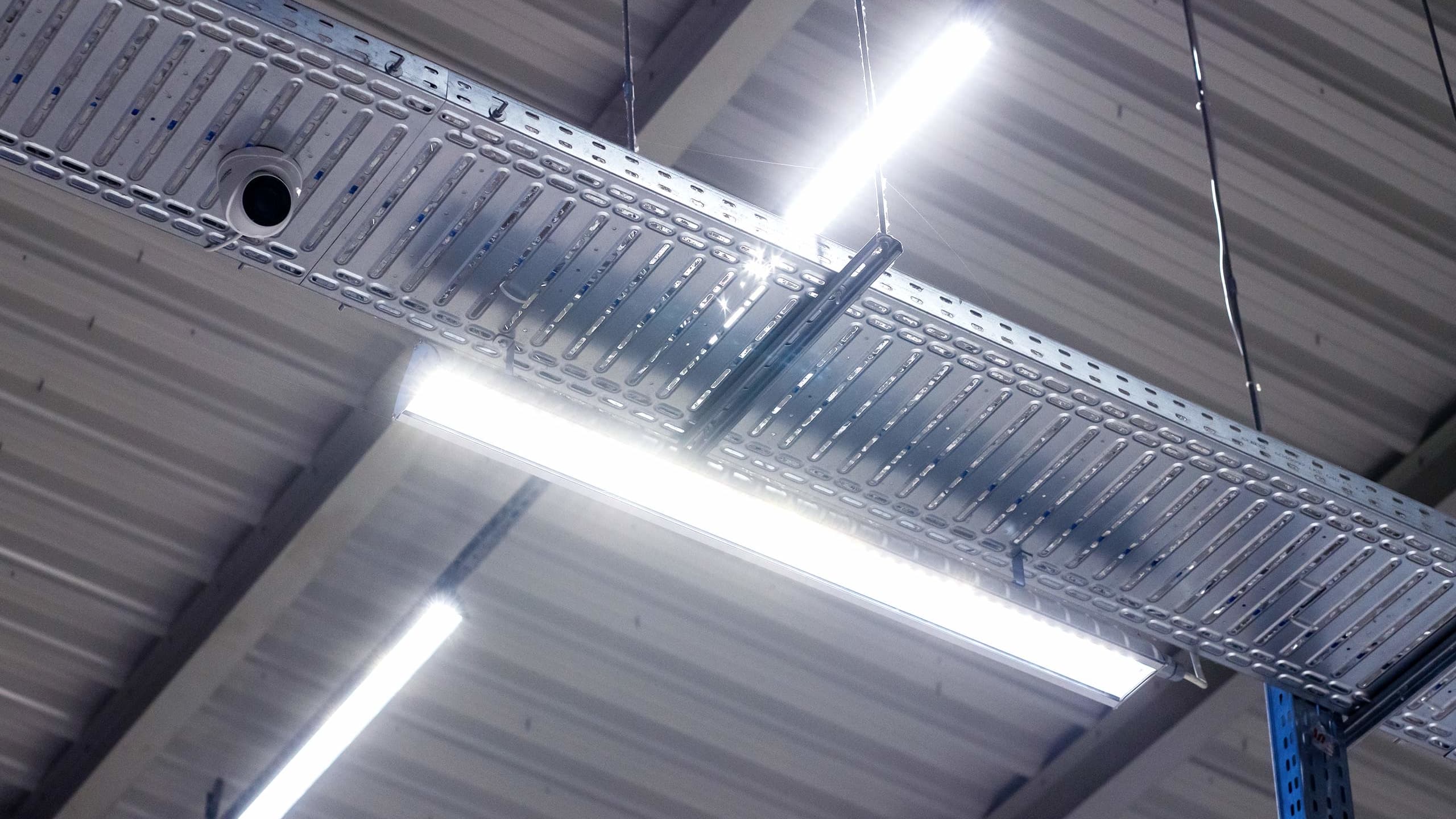Safe use of facilities should be guaranteed in every workplace. To this end, emergency and escape lighting is provided. This is particularly important when there is no natural light and the artificial lighting does not work due to a lack of power. Therefore, it is important to be aware of mistakes when designing emergency and escape lighting and avoid them. This will also minimise problems in the building acceptance process.
In this article you will find:
- legal considerations related to the emergency and escape luminaires
- notes on the design of emergency lighting
- the most common mistakes in escape lighting design.
The answer to these and other questions can be found in the following paragraphs.
Emergency and escape lighting systems – legal considerations
The design of such lighting systems should be based on standards, guidelines and other requirements. These include the EN 1838 standard. The information provided in the above legislation refes to the basic locations and installation of luminaires for both systems, as well as giving guidance on the use of the luminaires. However, problems often arise in the interpretation of the legislation, which results in the incorrect designation of zones where emergency and escape lighting systems must be used. The differences and similarities between the two are described in the article What is the difference between emergency and escape lighting?

Emergency lighting and escape lighting systems – planning considerations

Note that emergency lighting systems should ensure safe escape during a hazardous situation. However, the advice on the specific areas that should be equipped with escape lighting is contained in the regulation commonly referred to as the WT technical specifications. These recommendations apply in particular to places with large surface areas, including those in industrial plants. Designers also use the guidelines found in the ordinance on general health and safety regulations to determine where to install emergency lighting. The guidance contained therein recommends that such lighting should also be placed in rooms and areas where, in the event of an emergency, the life or health of employees may be endangered.
To make sure that a free and safe place can be found, the lighting should be placed on each exit door intended for escape in addition to pictograms. However, note that pictograms in the form of fluorescent signs should only supplement emergency escape lighting. It happens that there is a lack of such light sources, both indoors and outdoors, and those provided in buildings are not resistant to weather conditions, such as water or temperature.
In addition, the emergency luminaires used should also work with the fire protection measures. It is therefore essential to use it to illuminate fire-fighting equipment, which is often forgotten.

Importantly, emergency lighting must not replace back-up lighting. However, the design of emergency escape lighting is not required when emergency back-up lighting that meets the requirements for emergency escape lighting is provided on the premises. The prerequisite is that the minimum light intensity levels are maintained.
The most common errors in the design of emergency and escape lighting
In practice, the most common mistakes show up during the installation of the escape lighting. The relevant standard specifies how to select lighting on escape routes. Often, however, designers misinterpret its provisions, so that the guidelines and escape route lighting are not correct. This applies in particular to the distances between luminaires, which are usually too far apart.
Furthermore, note that the emergency escape lighting should be provided both, on the escape routes and at the emergency exits, together with pictograms adapted to the luminaires. In this case, particular attention should be paid to their fitness for the place of installation as well as the placement of the pictogram in accordance with the standard. Sadly, it happens that such safety signs are not properly matched to their area of application. This, in turn, can cause disorientation and hinder the escape from buildings and thus endanger the occupants. The placement of escape signs directly on light sources should also be avoided.
Common mistakes made in the design of emergency and escape lighting are in the distances between luminaires and components of other systems. This includes distances from ventilation and air-conditioning equipment, and is also related to the requirements of the ordinance on the fire protection of buildings that provides information on minimum distances from fire alarms.

We have outlined the most common mistakes when designing emergency and escape lighting. Together with our partners, we can work out the design of the primary and local lighting and equip the facility with emergency luminaires. Would you like to find out more about this topic? Ask your question in the form below.

Do you have additional questions?
Ask our expert
See other articles
What is discomfort glare?
Every one of us has, on more than one occasion, experienced dazzling light, which, in practice, is known as discomfort glare. Commonly referred to as glare, this effect adversely affects the eyes, reducing vision and recognition.
Lumens to watts – how to convert the luminous flux?
The luminous flux of LED lighting is given in lumens. With traditional light sources, on the other hand, the luminous intensity was usually determined as the power they consumed in watts. To be able to at least compare the two sources to some extent, it is necessary to convert lumens to watts. Therefore, in this article we address this issue.

Masz dodatkowe pytania?
Zapytaj naszego eksperta




